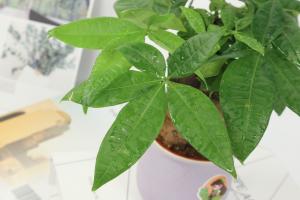How to Nurture Tomato Plants
Tomatoes are a favorite crop for many home gardeners due to their versatility in cooking and the pleasure of plucking a sun-warmed fruit straight from the vine. However, growing healthy and productive tomato plants requires proper care and attention throughout the growing season. Here are some tips to help you nurture your tomato plants.
1. Choose the Right Location
Tomatoes require full sunlight, so you should choose a location in your garden that receives at least six hours of direct sunlight daily. They also need well-draining soil with a pH level between 6.0 and 6.8. If your soil pH is too low, you can add lime to raise it. For heavy, clay soils, adding organic matter such as compost or peat moss can improve drainage, and for sandy soils, you can add organic matter to improve water retention.
2. Proper Watering
Tomatoes need regular watering to thrive. They require at least one inch of water per week, either from rainfall or irrigation. However, it is essential to avoid overhead watering, as this can increase the likelihood of developing diseases. Instead, use a soaker hose or drip irrigation to ensure that the soil around the plant's roots is consistently moist. Water early in the morning to allow the foliage to dry before nighttime, reducing the risk of fungal infections.
3. Fertilizing
Tomatoes are heavy feeders, and they require sufficient nutrients to produce healthy foliage, flowers, and fruit. Adding a balanced fertilizer with equal parts nitrogen, phosphorus, and potassium can improve growth and development. However, over-fertilizing can cause excessive vegetative growth, resulting in fewer fruits. It is best to fertilize at planting time and again every four to six weeks during the growing season.
4. Pruning and Staking
Tomatoes can quickly become tall and unwieldy, making them susceptible to disease and breakage. Therefore, pruning and staking can help keep the plants upright and free of pests and diseases. Pruning involves removing the suckers that grow between the main stem and branches, allowing for improved air circulation and light penetration. Staking involves tying the plant's main stem to a stake or trellis to support the plant and ensure proper growth.
5. Pest and Disease Control
Tomatoes are also susceptible to pests and diseases, including aphids, whiteflies, tomato hornworms, and blight. To control pests, you can use insecticidal sprays, or you can introduce natural predators such as ladybugs or lacewings. To prevent diseases, ensure that the plants' leaves are dry and avoid planting in areas where tomatoes, peppers, or eggplants have grown in previous years, as these crops share common diseases.
6. Harvesting Tomatoes
Once your tomato plants have produced fruit, it's time to harvest them, and there are a few tips to ensuring the best quality and flavor. Harvest only ripe, slightly soft tomatoes that come off the vine easily with a slight twist. Store tomatoes at room temperature and away from direct sunlight, as refrigeration can reduce their flavor and texture. And don't forget to save a few seeds from your best fruits to plant next year!
By following these tips, you can keep your tomato plants healthy and productive throughout the growing season. With proper care and attention, you'll be rewarded with juicy, delicious tomatoes that will make your garden and your taste buds sing!

 how many times do yo...
how many times do yo... how many planted tre...
how many planted tre... how many pine trees ...
how many pine trees ... how many pecan trees...
how many pecan trees... how many plants comp...
how many plants comp... how many plants can ...
how many plants can ... how many plants and ...
how many plants and ... how many pepper plan...
how many pepper plan...
































